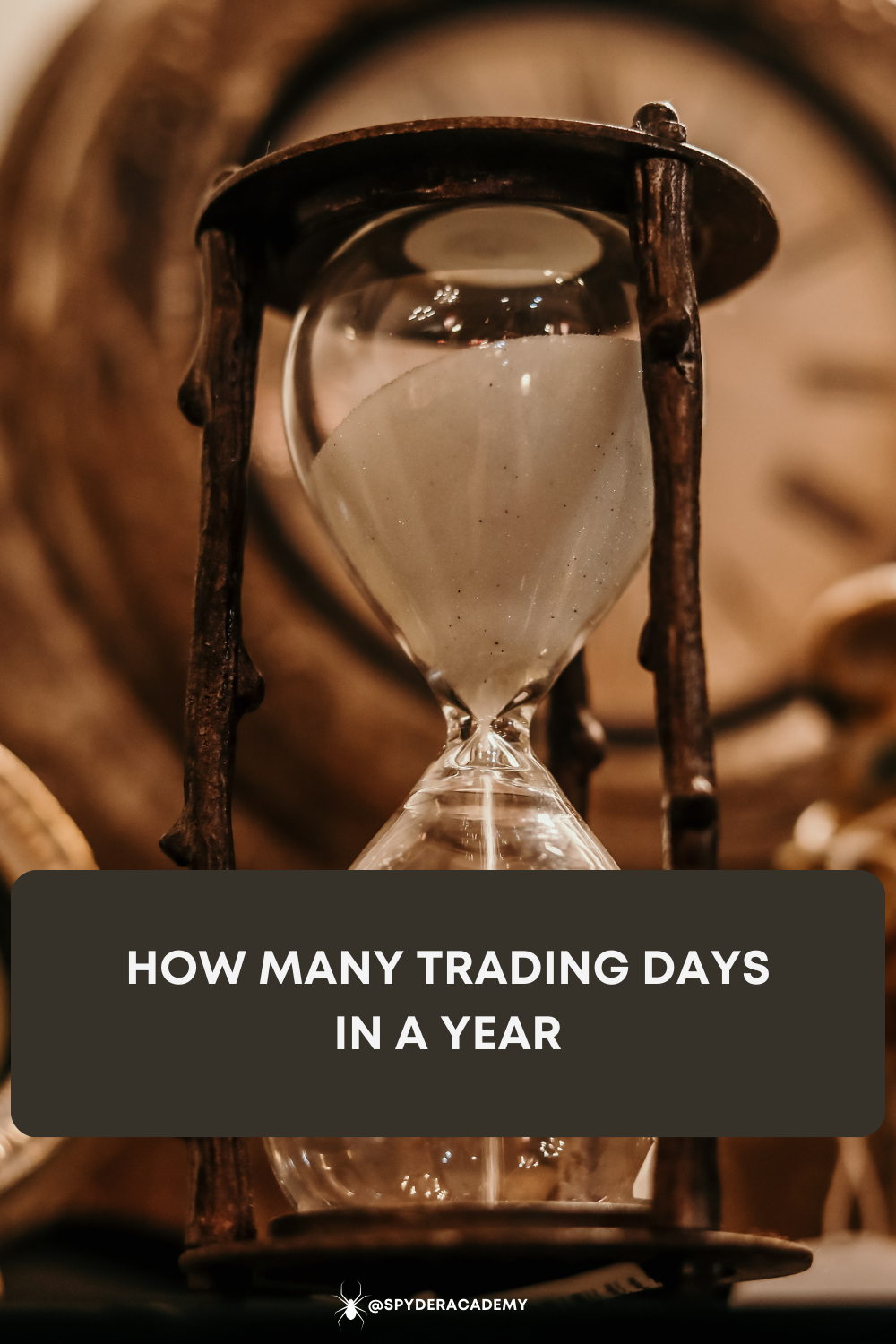Understanding the number of trading days in a year is crucial for traders and investors planning their strategies. In this guide, we’ll delve into various aspects related to trading days, including holidays, trading hours, and the optimal times for trading.
How Many Trading Days In A Year?
The standard trading year typically consists of 252 trading days. This number accounts for weekdays and excludes weekends and market holidays.
List of Stock Market Holidays in 2024
Here’s a list of stock market holidays in 2024 to help you plan your trading activities:
- New Year’s Day: January 1, 2024
- Martin Luther King Jr. Day: January 15, 2024
- Presidents’ Day: February 19, 2024
- Good Friday: March 29, 2024
- Memorial Day: May 27, 2024
- Independence Day: July 4, 2024
- Labor Day: September 2, 2024
- Thanksgiving Day: November 28, 2024
- Christmas Day: December 25, 2024
How Many Weeks Is a Trading Year?
A trading year typically comprises around 52 weeks, excluding holidays. This makes it essential for traders to plan their strategies around weekly trends and patterns.
How Long Is 1 Trading Day?
A standard trading day lasts for approximately 6.5 hours. The specific hours can vary slightly depending on the stock exchange, with the most common trading hours being from 9:30 AM to 4:00 PM (Eastern Time).
How Many Hours Is the Stock Market Open Per Day?
The stock market is open for 6.5 hours each trading day, providing ample opportunities for traders to execute their strategies and make investment decisions.
Which Day of the Week Is Best for Day Trading?
While there’s no universal “best” day for day trading, many traders find that Wednesdays and Thursdays tend to exhibit more volatility and favorable trading conditions. It’s essential to monitor market trends and adjust your strategy accordingly.
What Is the Best Time of the Year to Trade?
The best time to trade often depends on your trading style and preferences. However, many traders consider the period between January and April as particularly active, with various market opportunities.
What is the saying Sell in May and Go away?
“Sell in May and go away” is a financial adage or stock market proverb that suggests an investor should sell their stocks in May and avoid the stock market until the end of the summer, typically returning in November. The idea is based on the historical observation that stock markets tend to underperform, or at least exhibit lower volatility, during the summer months compared to the rest of the year.
The full version of the saying is often given as “Sell in May and go away, and come back on St. Leger’s Day” (referring to the St. Leger Stakes, a prestigious horse race in the UK, which is held in September). The saying implies that investors could avoid potential market declines during the traditionally slower summer months by selling in May and then re-entering the market in the fall.
The origins of this phrase are not entirely clear, and it’s considered more of a market anecdote than a reliable investment strategy. While there might be historical instances where the market performed poorly during the summer, following this adage blindly is not recommended. Financial markets are influenced by a myriad of factors, and historical patterns may not reliably predict future market behavior.
Investors are generally encouraged to base their decisions on thorough analysis, risk tolerance, and long-term financial goals rather than relying on seasonal patterns or catchy adages. Markets can be unpredictable, and successful investing requires a disciplined and well-researched approach rather than relying on short-term trends or sayings.
What does “Santa Rally” mean?
The “Santa Rally” refers to a historical tendency for stock markets to experience a rally, often in the last weeks of December, extending into the first few trading days of January.
This phenomenon is sometimes also referred to as the “December Effect” or the “Christmas Rally.”
The Santa Rally is not a universally consistent pattern, but it has been observed in various financial markets, especially in the United States. The exact reasons behind the Santa Rally are debated, and several factors could contribute to this seasonal upswing:
- Holiday Optimism: During the holiday season, there is often a sense of optimism and positive sentiment among investors. This positive mood can translate into increased buying activity in the stock market.
- Tax Considerations: Some investors engage in tax planning towards the end of the year, which might involve selling losing positions for tax purposes. Once this “tax-loss selling” pressure is removed, the market may experience a rebound.
- Low Trading Volume: Trading volume tends to be lower during the holiday season as many market participants are away on vacation. Lower trading volumes can lead to increased volatility, and relatively small trades can have a more significant impact on prices.
- Investment Fund Flows: Some institutional investors may engage in portfolio adjustments or “window dressing” towards the end of the year. This can involve buying stocks that have performed well during the year to showcase in their year-end reports.
- Positive Economic Data: If economic indicators released toward the end of the year show positive trends, it can boost investor confidence and contribute to a year-end rally.
It’s important to note that while the Santa Rally has been observed in the past, it is not a foolproof strategy, and markets can be unpredictable.
How Many Trading Days in 2024?
In 2024, there will be 252 trading days.
How Many Trading Days in 2025?
In 2025, there will be 251 trading days.
How Many Trading Days in 2026?
In 2026, there will be 251 trading days.
Keep an eye on market calendars and plan your trades accordingly to make the most of each trading year.
Conclusion
Understanding the intricacies of trading days, holidays, and optimal trading times is vital for any trader or investor. By staying informed and planning ahead, you can enhance your trading strategy and navigate the dynamic landscape of the financial markets effectively.




